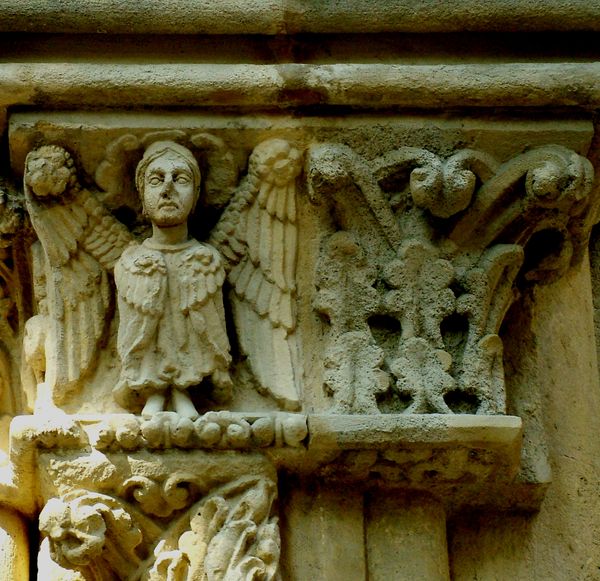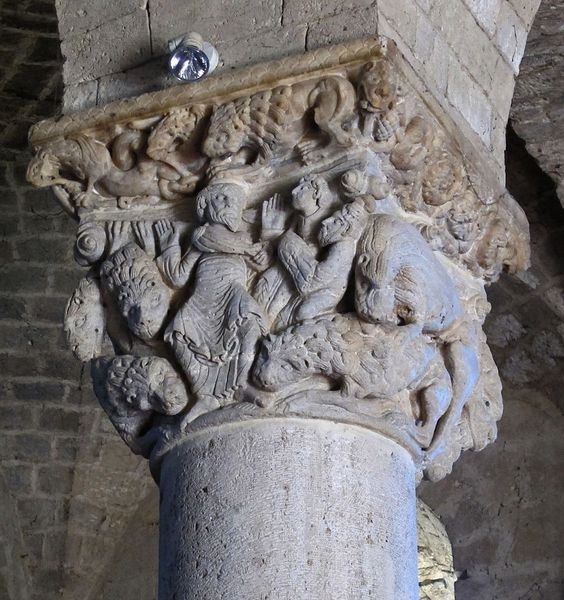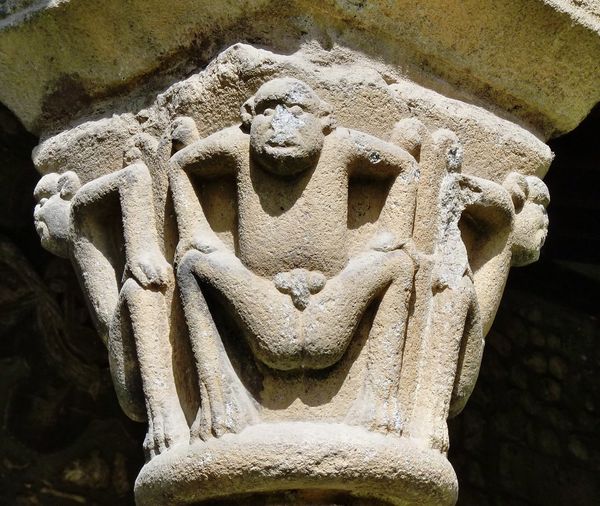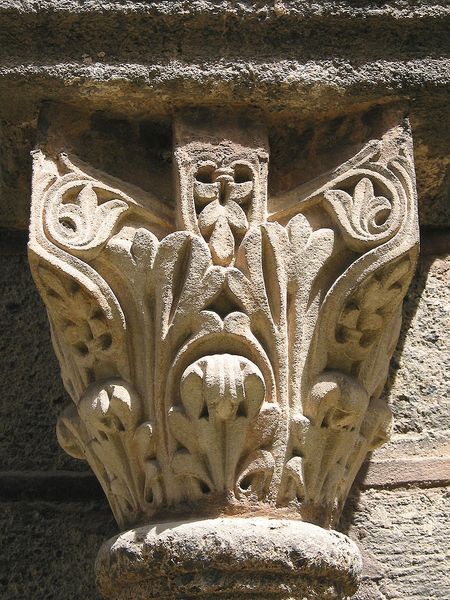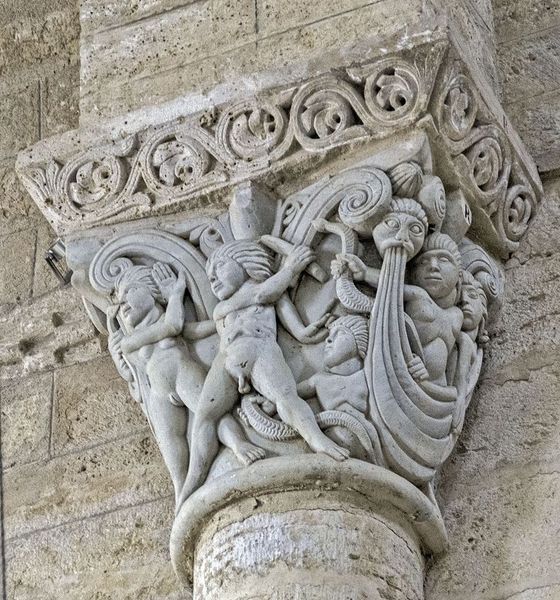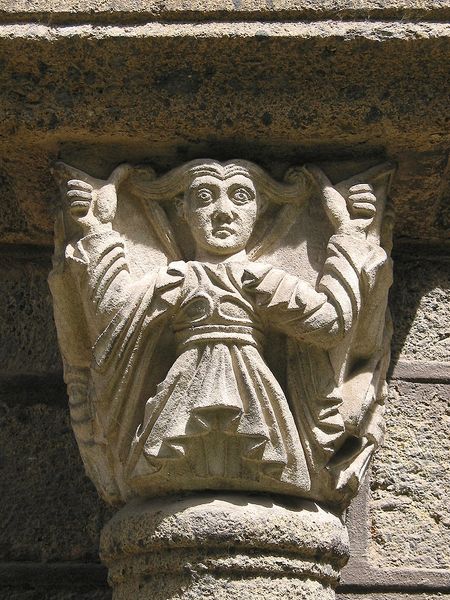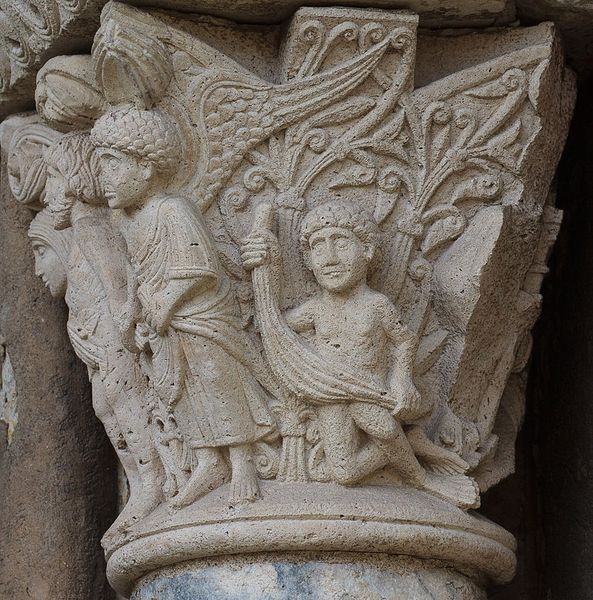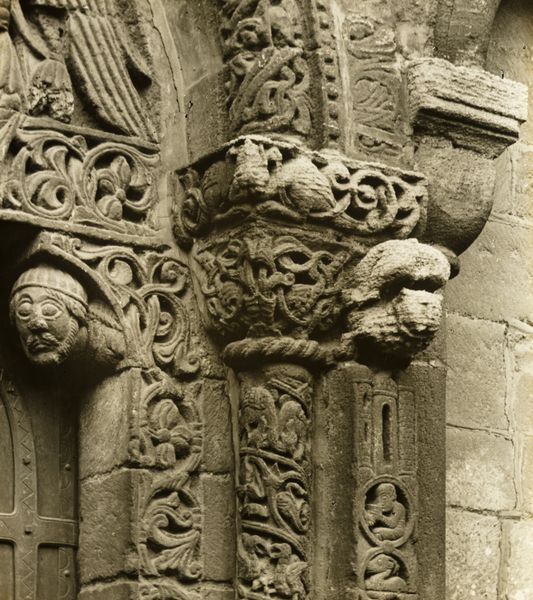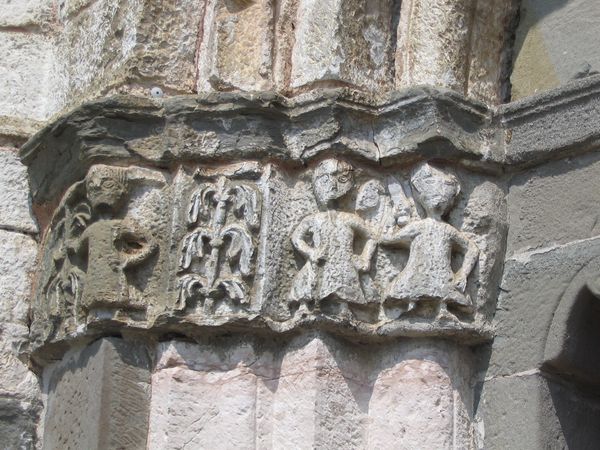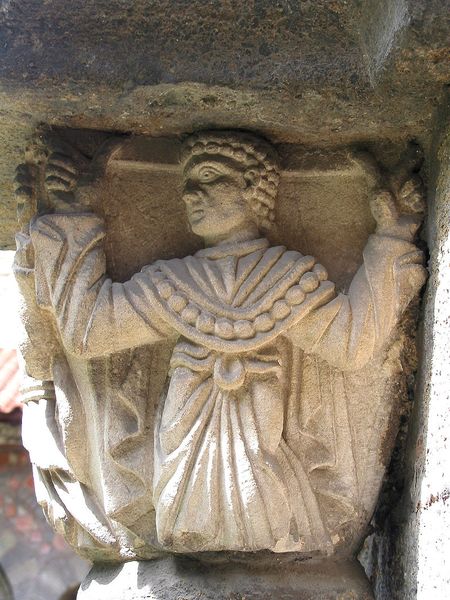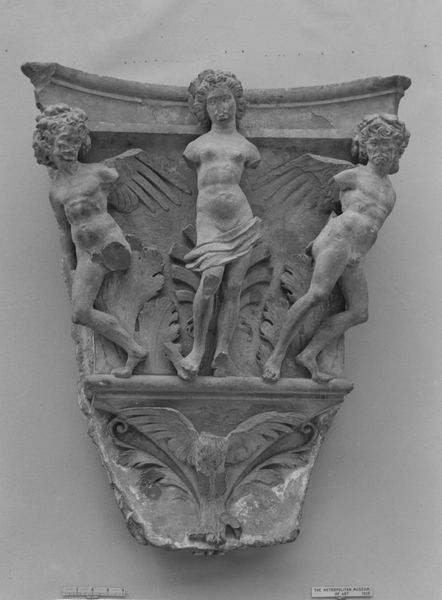
carving, relief, sculpture
#
public art
#
medieval
#
carving
#
sculpture
#
relief
#
figuration
#
romanesque
#
sculpture
#
urban art
#
history-painting
Copyright: Public domain
Curator: Here we have a Romanesque capital from Vézelay Abbey in France, dating back to around 1150. Editor: My first impression is one of dynamic tension. The figures seem to be straining, caught within these tight, swirling forms of the stone itself. It is quite tactile. Curator: Absolutely. Romanesque sculpture wasn’t just about aesthetics; it served as a visual bible for a largely illiterate populace. The materials themselves – the stone, the pigments that would have once colored it – would have been locally sourced, emphasizing the community's labor and resources poured into constructing their sacred space. Editor: That brings up questions of power dynamics. The elite controlled the means of production and dictated the narratives. Looking closer, I wonder who these figures represent? The seated one seems to be working at some type of loom…is this about a gendered division of labor? Or something else? Curator: Interpretations vary, but scholars often read such scenes as allegories. This carving would be a key component within the larger program. The choice to depict a human actively working – instead of merely passively venerating – makes this particular Romanesque capital all the more special. Editor: It really invites reflection on the lives of ordinary people during this period, their skills, their struggles… Were these artisans aware of the messages they were subtly weaving into their works, perhaps a quiet resistance through craft? The raw labor, often anonymous, shaped not only the stones but the very fabric of their society. Curator: A wonderful point. While the Church may have commissioned these works, the individual stonemasons, carvers, and quarry workers each possessed unique skillsets. Their techniques were carefully guarded trade secrets, handed down through generations of apprenticeship, allowing the Romanesque style to spread and evolve with each maker's interpretation. Editor: Standing here now, centuries later, one cannot deny how a close examination of the materiality combined with socio-political understanding grants new insight into this sculpture's inherent power. Thank you for drawing my eye toward the stories in the stone. Curator: Indeed. By acknowledging both the artistic labor and social structures embedded within even these small components of a grander scheme, we glean richer understandings of this pivotal period in history.
Comments
No comments
Be the first to comment and join the conversation on the ultimate creative platform.
